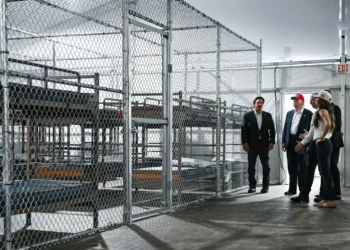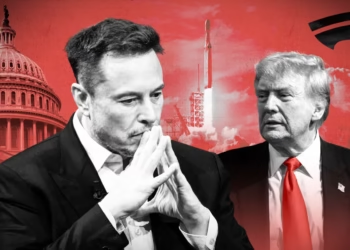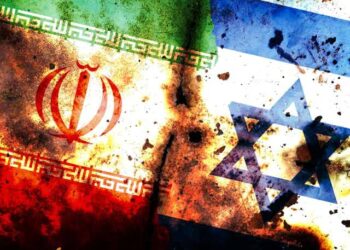The world watches with bated breath as the cardinals gather for the papal conclave. With ceremony and secrecy, the process of selecting a new pope is about to begin.

The white smoke is a famous signal. When it streams out of a chimney at the Sistine Chapel, it announces that a new pope has been chosen, setting off celebrations among 1.4 billion Catholics worldwide.
This article will delve into the ancient rituals and significance of the conclave, providing an overview of the process and its importance to the Catholic community.
Key Takeaways
- The papal conclave is a secretive process.
- White smoke signals the election of a new pope.
- The Sistine Chapel is the venue for this historic event.
- The process is steeped in tradition and ancient rituals.
- The new pope’s election is a significant moment for Catholics worldwide.
The Sacred Tradition of Papal Succession
The Catholic Church’s tradition of papal succession is a centuries-old practice that is both revered and complex. This tradition is rooted in the Church’s history and is crucial to its continuity and stability.



The process of selecting a new Pope involves the College of Cardinals, who are responsible for electing the next Pope through a rigorous process known as a papal conclave. This process is governed by conclave rules and rituals that have evolved over the centuries.
The Significance of Papal Transition in Catholic History
The transition of papal power is a significant event in Catholic history, marking not only the passing of leadership but also the continuity of the Church’s mission. The history of papal elections is a rich tapestry of spiritual, political, and social influences.
Evolution of Pope Selection Through the Centuries
The method of selecting a new Pope has undergone significant changes throughout the centuries. A pivotal moment was in 1274, during the Second Council of Lyons, when Pope Gregory X established the procedure for holding a conclave through the document Ubi Periculum. This marked a significant shift towards a more formalized and isolated process of election, aimed at ensuring the integrity and secrecy of the papal conclave.
- The process involves the College of Cardinals.
- It is governed by strict rules and rituals.
- The history of papal elections is complex and influenced by various factors.
The Papal Conclave: History and Purpose of the Sacred Election
With its origins in the medieval period, the papal conclave has evolved into a sophisticated process of papal selection. The conclave system has its roots in the 13th century, when cardinals were secluded to elect a new pope, ensuring the integrity and secrecy of the process.
Origins and Evolution of the Conclave System
The conclave system was first introduced by Pope Gregory X in 1274 at the Second Council of Lyon, aiming to prevent external interference in papal elections. Over the centuries, the conclave has undergone significant changes, with various popes contributing to its development. The process has adapted to the needs of the Catholic Church, maintaining its core principle of electing a new pope through a secret conclave.

The College of Cardinals: Electors of the Pope
The College of Cardinals plays a crucial role in the papal conclave, as its members are responsible for electing the new pope. Comprised of senior bishops from around the world, the College is a diverse group that brings together various perspectives and experiences. Cardinals under the age of 80 are eligible to participate in the conclave, making them the electors of the next pope.
Conclave Rules and Regulations Established by Church Law
The papal conclave is governed by a set of rules and regulations established by Church law, which dictate the procedures for the election. These rules include the requirement for a two-thirds majority vote for the election of a new pope and the use of secret ballots. The conclave is characterized by its isolation, with cardinals being cut off from the outside world until a new pope is elected, underscoring the significance and solemnity of the papal conclave process.
From Death to Election: Setting the Stage for a New Pope
As the Holy See becomes vacant, the cardinals prepare for a conclave that will determine the future of the Catholic Church. This period of transition is marked by specific rituals and responsibilities, primarily handled by the camerlengo, the cardinal chamberlain.
The camerlengo’s role is crucial in the period immediately following a pope’s death. It is their duty to verify the pope’s passing and to administer the Holy See until a new pope is elected. As outlined in the Church’s laws and traditions, the camerlengo performs specific rites and duties, ensuring continuity and preparing the ground for the conclave.
Sede Vacante: The Empty Throne
“Sede Vacante,” or “the empty throne,” refers to the period when the Holy See is vacant. During this time, the cardinals are tasked with the governance of the Church and the preparation for the conclave. As Pope Francis’s apostolic constitution, “Praedicate Evangelium”, outlines some of the modern adjustments to this ancient process, the fundamental duties of the camerlengo and the cardinals remain rooted in tradition.
General Congregations: Cardinals Prepare for Conclave
Before the conclave begins, the College of Cardinals holds General Congregations. These meetings allow the cardinals to discuss the issues facing the Church and to prepare for the election of the new pope. It is a time for reflection, prayer, and deliberation among the cardinals, setting the stage for the conclave to come.
As the cardinals move towards the conclave, they are guided by the Church’s laws and the
“The Church’s future is in the hands of the Holy Spirit and the cardinals,” a phrase often echoed in such times, reflects the deep faith and responsibility that underpin this process
. The conclave, conducted with ceremony and secrecy, is about to begin, marking a significant moment in the life of the Catholic Church.
The Sistine Chapel: Sacred Ground for Papal Elections
The Sistine Chapel is renowned not only for its artistic masterpieces but also for its role in papal elections. This sacred space has borne witness to numerous conclaves, embodying the spiritual and historical heritage of the Catholic Church.

Why the Sistine Chapel Hosts the Conclave
The Sistine Chapel has been the site of papal conclaves for centuries. Its significance extends beyond its artistic value, providing a fitting backdrop for the solemn and sacred rite of electing a new pope. The chapel’s grandeur and beauty underscore the gravity and importance of the conclave.
Key reasons for its selection include:
- Historical significance
- Spiritual importance
- Aesthetic grandeur
Preparing the Chapel for the Sacred Election
Before the conclave begins, the Sistine Chapel is prepared with meticulous care. The altar is adorned, and the chapel is readied to host the cardinal electors. This preparation underscores the reverence with which the process of electing a new pope is regarded.
Michelangelo’s Frescoes: Silent Witnesses to History
The frescoes on the ceiling of the Sistine Chapel, created by Michelangelo, are some of the most famous artworks in history. During the conclave, these frescoes serve as a powerful reminder of the spiritual and artistic heritage of the Catholic Church, silently witnessing the election of a new pope.
“The Last Judgment,” a fresco by Michelangelo, adorns the altar wall, serving as a poignant reminder of the spiritual responsibilities undertaken by the new pope.
Inside the Conclave: Rituals and Daily Proceedings
As the cardinals enter the Sistine Chapel, a world away from the outside, they embark on a sacred journey to elect the next Pope. The conclave is a process steeped in tradition, with rituals and procedures that have evolved over centuries.
“Extra Omnes”: Sealing the Cardinals Inside
The conclave begins with the command “Extra Omnes” (Everyone outside), sealing the cardinals inside the Sistine Chapel, away from the outside world. This marks the beginning of a period of intense prayer and deliberation.
The Oath of Secrecy and Confidentiality
Before proceeding, the cardinals take an oath of secrecy and confidentiality, committing to the strict rules governing the conclave. This oath underscores the gravity and solemnity of their task.
Living Arrangements During Conclave
The cardinals are housed within the Vatican, with simple living arrangements designed to minimize distractions and emphasize their spiritual duty. The austerity of their surroundings is meant to focus their attention on prayer and the election.
The Voting Process: Scrutiny, Selection, and Ballots
The voting process is the core of the conclave, involving multiple rounds of scrutiny and selection until a new Pope is elected. The cardinals cast their ballots in secret, using a paper ballot system.
The Paper Ballot System
The paper ballot system is a traditional method used to ensure the secrecy and integrity of the election. Cardinals write the name of their chosen candidate on a ballot paper, which is then collected and counted.
Requirements for Election: Two-Thirds Majority
A two-thirds majority is required for a successful election. This stringent requirement ensures that the new Pope has broad support among the College of Cardinals.
Prayer and Deliberation Between Voting Sessions
Between voting sessions, the cardinals engage in prayer and deliberation, seeking guidance from the Holy Spirit. This period of reflection is crucial in helping them discern their decision.
| Aspect of Conclave | Description | Significance |
|---|---|---|
| “Extra Omnes” | Command to seal the cardinals inside | Marks the beginning of the conclave |
| Oath of Secrecy | Commitment to confidentiality | Ensures the integrity of the process |
| Paper Ballot System | Method of voting | Maintains secrecy and integrity |
White Smoke Rising: The World Watches for a Signal
The world watches with bated breath as white smoke rises, signaling the election of a new pope. This centuries-old tradition is a moment of great anticipation and curiosity.

The Chemistry and Mechanics Behind the Smoke
The chemistry behind the smoke has evolved over time. Modern methods ensure a clear signal, using chemicals that produce distinct colors. The smoke is generated by burning the ballots from the conclave.
Black Smoke: “Non Habemus Papam”
Black smoke indicates that no candidate has received the required two-thirds majority. It’s a signal that the election process is ongoing. The phrase “Non Habemus Papam” (we have no pope) is used when there’s no successful election.
White Smoke: The Moment of Announcement
White smoke signals the successful election of a new pope. It’s a moment of great joy and anticipation. The world watches as the deacon cardinal emerges on the balcony of St. Peter’s Basilica to announce the new pope.
| Smoke Color | Meaning |
|---|---|
| Black Smoke | No pope elected; voting continues |
| White Smoke | A new pope has been elected |
The anticipation surrounding the announcement is palpable. The use of smoke as a signal is a unique aspect of the papal conclave, steeped in tradition and symbolism.
From Cardinal to Holy Father: The Transformation
As the white smoke rises, signaling the successful election of a new pope, a cardinal is transformed into the Holy Father, marking a significant moment in the Catholic Church’s history.
“Accepto”: Accepting the Call to Serve
The newly elected pope accepts the call to serve with the phrase “Accepto.” This moment is crucial as it signifies the cardinal’s willingness to take on the responsibilities of the papacy. The acceptance is followed by the pope being asked if he wishes to be addressed by a different name, signifying the start of his papacy.
Selecting a Papal Name and Its Significance
Selecting a papal name is a significant tradition in the Catholic Church. The new pope chooses a name that reflects his values, mission, or pays homage to a previous pope. For instance, Pope Francis chose his name in honor of St. Francis of Assisi, reflecting his commitment to simplicity and environmental stewardship.
- The choice of name can indicate the direction the new pope intends to take the Church.
- It often reflects the pope’s devotion to a particular saint or aspect of Catholic teaching.
- The papal name becomes an integral part of the pope’s identity and is used in official documents and ceremonies.
First Appearance on the Balcony of St. Peter’s
The first appearance on the balcony of St. Peter’s Basilica is a moment of great significance. The new pope delivers his first Urbi et Orbi blessing, addressing the city and the world. This moment is watched by millions worldwide and marks the beginning of the pope’s global ministry.
The Anticipated Papal Conclave of 2025
With Pope Francis’s papacy potentially coming to an end, the stage is set for a crucial papal election in 2025. The next conclave will not only choose a new pope but also shape the future direction of the Catholic Church.
Pope Francis’s Legacy and Influence on the Next Election
Pope Francis’s papacy has been marked by significant reforms and a focus on social justice, environmental issues, and inclusivity. His legacy will likely influence the selection of his successor, with cardinals potentially looking for a candidate who will continue or diverge from his policies.
“The next pope will face the challenge of maintaining the Church’s relevance in a rapidly changing world.”
Reforms to the Conclave Process Under Francis
Pope Francis has introduced reforms to the conclave process, including the apostolic constitution “Praiseworthy”, aimed at improving the election’s integrity and transparency. These reforms will likely impact the dynamics of the next conclave.
| Reform | Description | Impact |
|---|---|---|
| Apostolic Constitution “Praiseworthy” | Reformed conclave process | Enhanced integrity and transparency |
| Secrecy and Security | Stricter rules on conclave secrecy | Reduced risk of external influence |
| Cardinal Electors | Changes in cardinal elector rules | Potential shift in voting dynamics |
Global Context and Challenges Facing the Next Pope
The next pope will face numerous global challenges, including climate change, social inequality, and religious persecution. The papacy must navigate these issues while maintaining the Church’s teachings and relevance.

Cardinal Contenders: Who Might Be the Next Pope?
As the world watches, the College of Cardinals will gather to elect the next Pope, a decision that will be influenced by various factors, including the candidate’s theological stance, pastoral experience, and geographic representation.
Pietro Parolin: Profile of a Papal Frontrunner
Pietro Parolin, the current Cardinal Secretary of State, is often cited as a potential candidate due to his extensive experience in Vatican diplomacy and his close relationship with Pope Francis. His background in navigating complex international relations could be seen as a significant asset in the modern papacy.
Geographic Considerations: Where Will the Next Pope Come From?
The geographic diversity of the College of Cardinals suggests that the next Pope could emerge from various regions. While historically, Popes have come from Europe, there’s a growing representation of cardinals from Africa, Asia, and the Americas, potentially influencing the outcome of the conclave.
| Region | Number of Cardinals | Potential Impact |
|---|---|---|
| Europe | 120 | Significant influence due to historical presence |
| Asia | 50 | Growing representation, potentially bringing a new perspective |
| Africa | 30 | Increasing presence, could play a crucial role in the election |
| Americas | 80 | Substantial number, may sway the election with their voting bloc |
Theological and Pastoral Qualities Sought in a Modern Pope
The next Pope is expected to possess a blend of traditional theological grounding and modern pastoral sensibilities. As Cardinal Parolin has noted, “The Pope must be a man of prayer and deep faith, capable of guiding the Church through the complexities of the contemporary world.”
“The Pope is not a monarch but a servant… He must be aware of the needs of the people and be able to address them with compassion and understanding.”
Tradition Meets Modernity: Conclave in the 21st Century
As the papal conclave moves into the 21st century, it faces the challenge of balancing ancient traditions with modern realities. The process of electing a new Pope is steeped in history and ritual, yet it must also adapt to the influences and challenges of contemporary society.
Technology Restrictions: Jamming Signals and Electronic Sweeps
The modern conclave is characterized by strict controls on technology to prevent outside influence. Jamming signals and electronic sweeps are used to ensure the secrecy and integrity of the election process. This measure helps to maintain the independence of the cardinals as they make their decision.
Media Coverage and Global Interest in Papal Elections
The papal conclave receives extensive media coverage around the world, with millions of people following the events leading up to the election of a new Pope. This global interest highlights the significance of the papal role and the widespread influence of the Catholic Church.
Balancing Ancient Rituals with Contemporary Realities
Balancing the old with the new is a delicate task. The Church must preserve the sacred traditions of the conclave while adapting to the realities of the modern world. This includes managing the media presence and ensuring that the process remains transparent yet secure.
The evolution of the conclave process reflects the Church’s efforts to remain relevant and connected to the world while preserving its core traditions. As the Church looks to the future, it continues to navigate the complexities of conclave news and media coverage, ensuring that the election of the Pope remains a sacred and revered process.
Conclusion: The Enduring Mystery of Papal Election
The papal election remains a significant and intriguing event in the life of the Catholic Church, captivating the attention of millions worldwide. The history of papal elections is rich and complex, with the papal conclave being a crucial aspect of this process.
The College of Cardinals plays a vital role in the papal conclave, gathering to elect the next Pope. This ancient tradition, steeped in ritual and symbolism, continues to fascinate people globally.
Understanding the intricacies of the papal conclave provides insight into the Catholic Church’s inner workings and its ability to adapt to changing times while maintaining its core traditions. As the Catholic Church looks to the future, the next papal election will undoubtedly be a significant moment in its history.
The legacy of past popes, combined with the challenges facing the Church, will shape the selection of the next Pope. The papal conclave cardinals will carefully consider these factors as they gather to elect the next leader of the Catholic Church.
FAQ
What is a papal conclave?
A papal conclave is a secret gathering of cardinals in the Catholic Church to elect a new pope, typically following the death or resignation of the previous pope.
What is the significance of white smoke in a papal conclave?
White smoke is a signal that a new pope has been elected, produced by burning the ballots and other documents used in the voting process, mixed with chemicals that produce a white smoke.
How does the papal conclave process work?
The conclave process involves the College of Cardinals gathering in the Sistine Chapel, taking an oath of secrecy, and proceeding to vote until a new pope is elected through a two-thirds majority.
What happens during the Sede Vacante period?
During the Sede Vacante, or “empty throne,” period, the College of Cardinals governs the Catholic Church, holding General Congregations to prepare for the conclave and make necessary decisions.
Who are the cardinal contenders for the papacy in 2025?
Potential candidates for the papacy include high-ranking cardinals such as Pietro Parolin, with factors such as their experience, theological stance, and pastoral qualities influencing their likelihood of election.
How has the conclave process evolved over time?
The conclave process has evolved to incorporate modern technologies and adapt to contemporary realities, while maintaining ancient rituals and traditions.
What is the role of the Sistine Chapel in the papal conclave?
The Sistine Chapel serves as the site of the papal conclave, providing a sacred and historic setting for the cardinals to gather and elect a new pope.
How is a new pope announced to the world?
A new pope is announced through the white smoke signal, followed by the display of the new pope on the balcony of St. Peter’s Basilica, and the “Habemus Papam” declaration.
What are the key qualities sought in a modern pope?
The key qualities sought in a modern pope include strong pastoral skills, theological expertise, and the ability to navigate the complexities of the modern world.
How does the conclave process balance secrecy and transparency?
The conclave process balances secrecy and transparency through strict rules governing the cardinals’ activities, while also providing some information to the public through official Vatican channels.





















































